If you own a handgun for self-defense, then you should almost never unload it and in this article you’ll discover why …
And if for some reason you DO have to unload it, then I will tell you how to do it in a way that might just save your life one day.
You might think I’m going to talk about how to safely “clear” your handgun, or give you some safety tips about how to unload it, or something like that but that’s notwhat this is about.
The truth is, constantly unloading your self-defense handgun could get you killed.
In fact, it almost got one Law Enforcement Officer killed in Georgia (and probably many others we’ll never know about).
Let’s talk about why …
Self-Defense Guns Should Stay Loaded
What we’re talking about here is your self-defense firearm, specifically your self-defense handgun. I’m imagining that you carry this gun on you each day as your concealed carry piece or at the very least, that you keep it in the home for self-defense.
In either case, you should keep it loaded as much as possible.
The problem at this point is two fold:
1. Most people think loaded guns are dangerous and …
2. Sometimes you DO have to unload your gun, in certain circumstances …
So let’s address those now.
Loaded Guns Are No More Dangerous Than Unloaded Guns
The truth is that you should treat all guns the same.
This is the reason why the FIRST rule of the four fundamental firearms safety rules is “1. All guns are always loaded“.
Logically, we all understand that — at some point — a gun will mechanically be “unloaded” but the point of the first firearms safety rule is that ALL guns are ALWAYS treated as if they are loaded. All the time.
That would imply that, even if you think a gun is unloaded, you follow the other three safety rules by treating it as a loaded gun:
2. Never let the muzzle cover anything you are not willing to destroy.
3. Keep your finger off the trigger until your sights are on the target.
4. Be sure of your target and what is beyond it.
So that you never experience a very, very loud noise when you expected a click. And you never have a negligent discharge where you injure yourself or someone else unintentionally.
In fact, many notable firearms trainers, such as Tom Givens, have pointed out that (once you get past a beginner’s FIRST class where they don’t know a single thing) a “hot range” where all guns are kept loaded (but in the holster) the entire time are often safer than “cold ranges” where the students are told to “unload and show clear” their guns often throughout the day.
This is because almost all people treat their guns with more respect when they know they are loaded and because of this extra care and safety minded attitude, negligent discharges happen less frequently on these “hot ranges”.
The bottom line is that you should ALREADY treat all guns as if they are loaded. Period.
That makes it a SIMPLE two-step decision EVERY time you pick up a gun.
You either
1.) pick it up to shoot it or
2.) if you are doing ANYTHING else with it, you need to “clear” it first (unload it and check the chamber to make sure that it’s not loaded) so you can perform any number of administrative tasks such as checking the sights, cleaning it, etc.
So as you can see, constantly unloading and loading your handgun is not going to make you safer. In fact, one could argue that you’re more likely to have a negligent discharge in the process of all this administrative gun handling than at any other time. So keep it loaded and leave it alone.
How Constantly Unloading A Handgun Almost Got One Policeman Killed
Now, let’s talk about why you don’t want to constantly unload your handgun.
As we’ve discussed before, you should have “practice” ammo and “self defense” ammo for your handgun because handgun bullets are wimpy and you need all the help you can get.
That self defense ammo that’s in your gun should not be unloaded and reloaded multiple times though. This bulletin bulletin released by the Gwinnett County (GA) Sheriff’s Department will tell you why (in full disclosure, I first heard this story from Tom Givens, but here is the full story in written format with emphasis mine):
Gwinnett County Sheriff’s Department
Training Bulletin
January 1, 2012
In September of 2011, a GCPD officer was involved in a situation which quickly became a use of deadly force incident. When the officer made the decision to use deadly force, the chambered round in his duty pistol did not fire. Fortunately, the officer used good tactics, remembered his training and cleared the malfunction, successfully ending the encounter.
The misfired round, which had a full firing pin strike, was collected and was later sent to the manufacturer for analysis. Their analysis showed the following:
“…..the cause of the misfire was determined to be from the primer mix being knocked out of the primer when the round was cycled through the firearm multiple times.”
GCPD also sent an additional 2000 rounds of the Winchester 9mm duty ammunition to the manufacturer. All 2000 rounds were successfully fired.
In discussions with the officer, we discovered that since he has small children at home, he unloads his duty weapon daily. His routine is to eject the chambered round to store the weapon. Prior to returning to duty he chambers the top round in his primary magazine, then takes the previously ejected round and puts it back in the magazine. Those two rounds were repeatedly cycled and had been since duty ammunition was issued in February or March of 2011, resulting in as many as 100 chambering and extracting cycles. This caused an internal failure of the primer, not discernable by external inspection.
This advisory is to inform all sworn personnel that repeated cycling of duty rounds is to be avoided. As a reminder, when loading the weapon, load from the magazine and do not drop the round directly into the chamber. If an officer’s only method of safe home storage is to unload the weapon, the Firearms Training Unit suggests that you unload an entire magazine and rotate those rounds. In addition, you should also rotate through all three duty magazines, so that all 46 duty rounds are cycles, not just a few rounds. A more practical method of home storage is probably to use a trigger lock or a locked storage box.
Repeatedly Unloading and Loading The Same Cartridges Can Ruin Them
So what went wrong, in a nutshell?
Repeatedly unloading and loading the same rounds in this officers gun ruined the primers in these cartridges (in a nutshell). And if the primer doesn’t ignite when struck with the firing pin, the cartridge doesn’t work.
Repeatedly unloading and loading the same rounds can also cause a situation called “bullet setback” where the bullet is pushed back into the brass part of the cartridge causing a dangerous overpressure situation.
The point is, stop unloading and loading the same rounds in your handgun because nothing good can come of it.
What To Do When You Absolutely HAVE To Unload Your Gun
There are some instances where you HAVE to unload your gun. One reason why is not because you have small children at home (we’ll get to that in a minute). But maybe you only have one self defense gun and you want to dry fire practice with it every day (which requires the gun be unloaded). Or for whatever reason you need to unload it do to administrative handling of the firearm.
There is a little bit of good advice in that bulletin from the GCPD, followed by some VERY bad advice. Let’s talk about it.
First, Police are generally “issued” a certain type of self-defense ammo and a certain amount. So they are working with a “fixed amount” of this ammo, so keep that in mind. YOU do not have that restraint. If you want or need to buy more of your chosen self defense ammo you can do so whenever you want, so dont be stingy.
The bulletin says: “… as a reminder, when loading the weapon, load from the magazine and do not drop the round directly into the chamber. If an officer’s only method of safe home storage is to unload the weapon, the Firearms Training Unit suggests that you unload an entire magazine and rotate those rounds. In addition, you should also rotate through all three duty magazines, so that all 46 duty rounds are cycles, not just a few rounds.”
Which is all pretty good advice.
Here’s better advice. Follow this rule:
“If you load a self-defense round more than twice in your handgun, take it out of your self-defense magazine and put it in with your “practice” ammo so you shoot it the next time you’re at the range. Replace with new cartridge in your self-defense magazine”
Another easy way to make sure this never happens is to always shoot your chambered self defense round as your first round at the range.
If you wear your concealed carry gun to the range, then simply eject the magazine (full of your self-defense ammo) and DO NOT EJECT the self defense cartridge in the chamber, simply put your magazine full of practice ammo in the gun. Then the FIRST shot you always fire was the self defense cartridge that is already in the chamber. At the end of your practice session when you put your self defense ammo filled magazine back in your gun, you’ll top it off with a new round of self-defense ammo. Doing it this way ensures that you always have a “fresh round” in the chamber of your self-defense handgun.
Now, to finish it up, here’s the REALLY bad advice from the GCPD: “… A more practical method of home storage is probably to use a trigger lock”. Don’t use a trigger lock on a loaded handgun because the gun CAN still fire.
Instead, yes, get a locking safe so you can keep your handgun loaded and “ready” but locked away from small children or other unauthorized people.
In conclusion, stop unloading your handgun every time you get home because it’s not necessarily safer and it can actually get you killed because you can ruin your self-defense ammo. And if you must unload your handgun for a specific reason, then you need to make sure that you regularly rotate your self-defense ammo.

![Case Study: Defensive Gun Use [Video] NSFW](/wp-content/uploads/2025/07/Depositphotos_282075792_S-218x150.jpg)






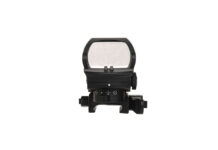
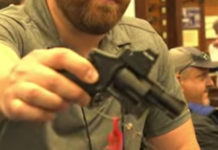
![What Level Holster Should You Be Using? [Video]](/wp-content/uploads/2024/04/Depositphotos_44548439_S-218x150.jpg)


![How Many Shots Will It Take? [Video]](/wp-content/uploads/2025/06/Depositphotos_2724272_S-218x150.jpg)

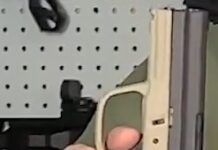
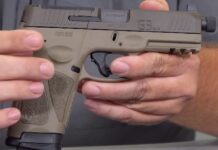





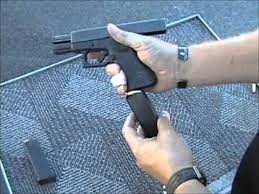




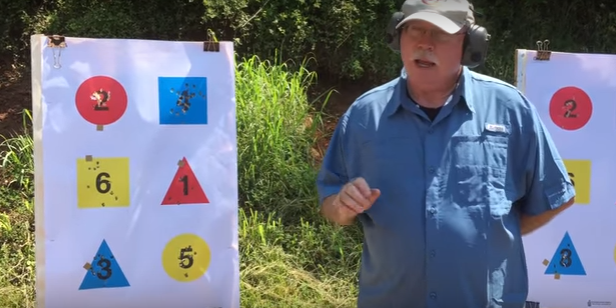





![Optic Ready vs Milled slides? [Video]](/wp-content/uploads/2024/02/image-3-100x70.png)
![[Checklist] What Gear You Need To Take Pistol, Rifle & Shotgun Training Courses [Video]](/wp-content/uploads/2023/07/Depositphotos_275087632_L-100x70.jpg)
![What is in Carter’s 2023 EDC? [Video]](/wp-content/uploads/2023/07/Depositphotos_146856137_L-100x70.jpg)
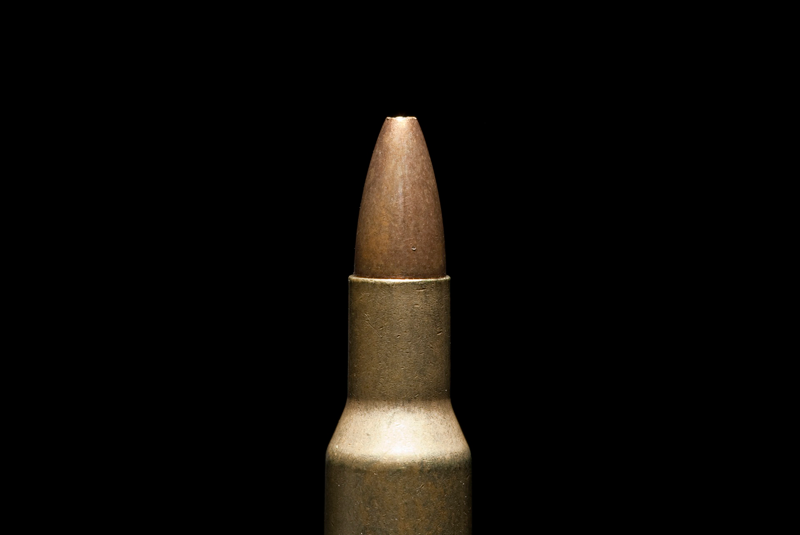
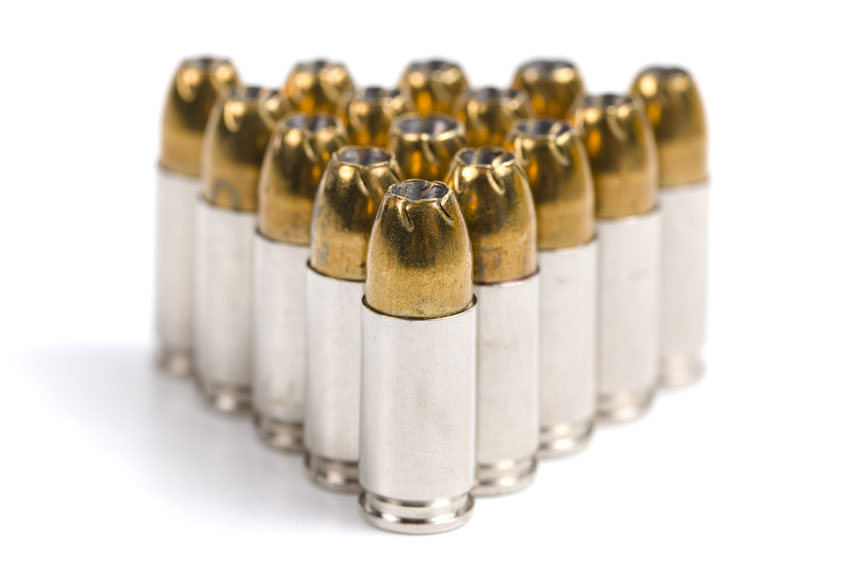

“Prior to returning to duty he chambers the top round in his primary magazine, then takes the previously ejected round and puts it back in the magazine. Those two rounds were repeatedly cycled and had been since duty ammunition was issued in February or March of 2011, resulting in as many as 100 chambering and extracting cycles. This caused an internal failure of the primer, not discernable by external inspection.”
I have to admit that I’m guilty of doing this. That is something that I’m going to change.
Great! That was the point of this article!
Putting a trigger lock on a loaded gun is way more risky than simply placing it in a safe. I also have a ballistic vest I use as a backstop for additional insurance.
My carry ammo is +P but my training ammo isn’t. I have a small box labeled “Training” that I drop my previously chambered rounds into. When I have a magazine full I’ll use it for training so I can get the full value from the multiple shot live firing cycle.
Exactly.
Trigger locks are a big NO NO
That’s a good tip though to keep the carry ammo piled up until u can shoot a whole mag full of it. That’s the most realistic option yet.
Thanks Caleb. With more then 50 years of firearms experience, this is the first I’ve heard of this problem. I would never have thought of the primer mix dislodging. I use to teach our new officers with small children to keep the chamber empty while at home as no small child has the strength or dexterity to pull the slide all the way back to chamber a round from the mag. If I had known then about this problem, I obviously would have taught differently. I have never unloaded my weapons at home. When my daughter was tiny, she could never reach it. As she got older, I instructed her on firearm safety and shooting. This took away the curiosity of the weapons (curiosity killed the cat). After several sessions of this education, she never even cared about touching the weapons, unless we went shooting.
Great point about teaching kids about firearms safety!
As for the “primer mix dislodging” — I may be wrong — but I think what actually happens is that over time the primer compound is “Crushed” without it ever really setting it off. Also the other major concern is bullet setback as mentioned.
This is a very informative article. I hadn’t thought about primers getting damaged that way. That makes sense especially considering how ejecting from a semiauto ejects rounds more forcefully than say a single action revolver.
I am happy when I learn something new that is also concretely useful.
Yeah. As I understand it, it’s the chambering of the round that also can cause the “bullet setback” as the round comes out of the magazine and into the chamber it’s basically bumping the head of the bullet back into the brass casing of the cartridge. So there’s a lot of force involved in the mechanical functioning of guns.
On AR’s it’s a bigger issue due to the free floating firing pin that literally taps the primer upon chambering.
Exactly sir. Gives the old primer a little kiss every time 🙂
Spare magazines are how I address this issue. I pull the magazine WHEN I unload the pistol (average once a week) The round is then unchambered and goes into a storage box labeled Chambered Rounds. The magazine is then unloaded and these go into a storage box labeled Magazine Rounds, the magazine is then cleaned, and stored to reduce spring fatigue. Second magazine is loaded into the pistol, a new round is cycled through, the magazine comes out and a new round from one of my storage boxes tops off the magazine. Rounds that have been cycled through the chamber 2 times, or fired and reloaded, go into the practice box. Every round is replaced every year. Magazines get two weeks rest for each week loaded. Everything is now clean, ready and maintained so if I ever do fire a round, it will go bang.
WOW!
Now THAT is a well thought out maintenance procedure lol. A little too “OCD” for me (I’m more the cave man operating type) but good on you sir for addressing the problem
Also, my understanding is that “resting” the mags is unnecessary. I was told that keeping them fully loaded doesn’t wear out the springs; constantly loading and unloading them does. True?
That’s my understanding too Paul. I don’t worry about loading/unloading. I just load and leave alone. I fire the carry ammo all up about 2x year maybe to make sure fresh rounds are in there if ever needed.
I would love to see the actual findings during the dismantling of the failed round.
Well Caleb. FYI, My gun is on me at all times. People always ask me why I always carry. Because it does you no good any where else but on you. A gun in the closet, drawer safe or where ever you may have it is useless unless it is on your person. That goes for all my extra magazine also.
That’s the truth Michael. Thanks.
Well, if magazine springs don’t set, then I guess I am to presume that firing pin springs and trigger springs also do not? So, if that is the case, then there is no harm in leaving a semiauto pistol (or rife) perpetually cocked. Is that right?
So, if magazine springs don’t set, then I presume firing pin springs and trigger springs, etc, don’t set either? If so, then there is no harm in leaving a semiauto pistol (or rifle) perpetually cocked, right?
I carry a Glock and the Glock is a semi auto without a hammer. Habit I always keep one in the chamber, we I have to show someone my weapon I clear the chamber, but I make sure to always reload. When the weapon is empty, I pull the trigger back and I know the weapon is empty, but I always treat any weapon as if it was loaded at all times. This is just me. Others who knows?
Comments are closed.